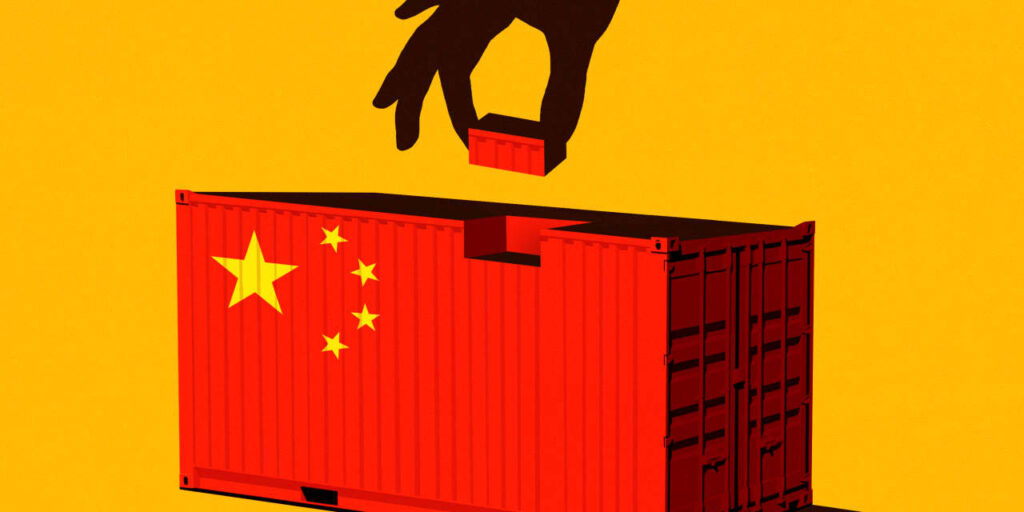About the author: Marc Chandler is chief market strategist for Bannockburn Global Forex, a division of First Financial Bank.
Napoleon warned that China was a sleeping giant and the world would shake when it awoke. It has, and accommodating its rise is one this era’s central challenges.
Economists argue that China’s imbalance favoring investment over consumption threatens global prosperity. Conventional wisdom suggests that China should boost consumption. It can absorb more of its own surplus. This sounds right in the abstract, but in concrete terms, it seems environmentally and politically tone-deaf. It puts the U.S. in the position of telling other countries what they can do to help America and pushes a development model that is predicated on continued environmental degradation.
China is still a poor country. It accounts for about 18% of the world’s population and around 13% of the world’s consumption. China’s gross domestic product per capita is about $12,700, according to the World Bank. Does the world have the capacity and environmental durability to significantly increase China’s consumption?
To put numbers to it, the U.S. has more than 800 light vehicles for every 1,000 people. China? Fewer than 200. China consumes about 13% fewer calories than Americans per capita and about 4% fewer than Europeans, the United Nations estimates. China’s water consumption is slightly more than a third of what the average American consumes. Per capita, China produces less than a quarter of the solid municipal waste that Americans do daily, and about 60% of the global average.
Consumption is about 54% of China’s GDP. Per capita, consumption has more than doubled over the past decade, a rare feat that critics often miss. And for some consumption, it punches above its weight. China accounts for a third of global luxury goods purchases, more than a quarter of smartphones, and nearly a quarter of the world’s energy.
Some argue that a stronger social safety net in China would reduce the pressure on households to save for unemployment, sickness, and old age. Yet, the correlation between consumption and the extent of some social safety net provisions remains debatable, as a glance at the U.S. and EU will show.
Also, we know that investment isn’t limited by the stock of savings. Indeed, China hasn’t become the world’s factory or dominant in rare-earth production and processing, the leader in cutting-edge electric vehicles, or the largest producer of solar panels, for example, because of its weak social security system. There are compelling reasons for China to strengthen the basket of goods that people get as citizens (derided as entitlements) outside of the supposed implications for the consumption/investment mix.
China scaled back its welfare state a half-century ago, when the U.S. and Europe were revising theirs. Chinese leader Mao Zedong’s “Iron Rice Bowl,” which included guaranteed work, social welfare, and healthcare, was abandoned mainly under the guise of market reforms. Still, there is little interest in reviving it under President Xi Jinping’s reign.
Former U.S. National Security Adviser W.W. Rostow’s The Stages of Economic Growth continues to shape the modernization views in Washington. Rostow saw mass consumption as society’s highest stage. The idea that China needs to embrace follows it like night the day. Among other things, it assumes that consumption is value-neutral. Yet it had to be learned.
A preference for new over old had to be instilled. Built-in obsolescence and an emphasis on changing fashion require cultural transformations, a permanent revolution. The acquisitive character is a cultural artifact; it is the sublimation and normalization of the hoarder and miser. Ironically, consumption is ostensibly about personal expression, yet it begets conformity.
Property had been the engine of Chinese development. It was a savings vehicle. It generated demand for commodities and industry. Land sales were an essential source of revenue for local governments. But China’s property crisis forced a pivot. Beijing has redirected investment to manufacturing and (back to) infrastructure. It is going about as well as fixing a flat on a moving car.
Investment has averaged more than 40% of China’s GDP since the early 1990s, which is off-the-charts strong. But every unit of investment generates a smaller unit of output. China’s investment in manufacturing capacity will give it market share at the expense of the rest of the world. At the same time that China builds the world’s most coal-fueled power plants, it is investing more than the rest of the world in green technology.
China’s ascent would be disruptive even if it were a transparent, dynamic capitalist country. Many countries will act to protect their jobs and industries, but they have been on this path for some time. China’s sheer scale means that whatever it does is significant and affects the world. That includes consumption and waste.
Perhaps the economists are right that the world cannot afford for China to continue to invest such a large percentage of its GDP. But can the Earth support and the environment absorb the classic modernization of seemingly endless consumption and waste? We are impaled on the horns of the dilemma either way.
Guest commentaries like this one are written by authors outside the Barron’s and MarketWatch newsroom. They reflect the perspective and opinions of the authors. Submit commentary proposals and other feedback to ideas@barrons.com.
Read the full article here

